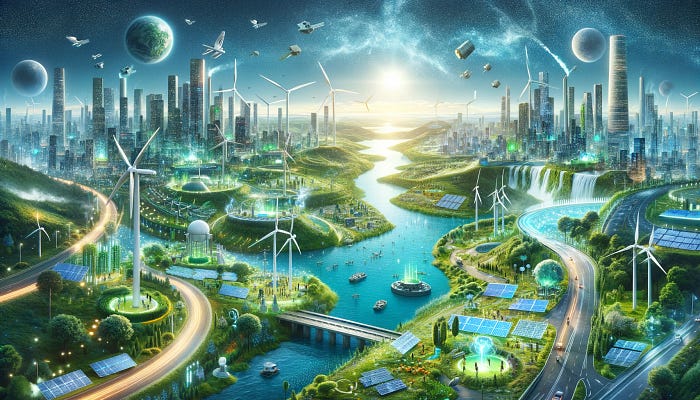Transforming Energy: The Path to Total Electrification
Written on
Chapter 1: Understanding Energy Waste
Every year, approximately 20 billion tons of fossil fuels are consumed for heating, transportation, and electricity generation, resulting in the loss of two-thirds of this energy as waste heat. This process also generates around 40 billion tons of CO2 emissions.
In our future economy, any energy value chain that can transition from wind turbines to electrical services without relying on fossil fuels will be immensely beneficial. This approach will lead to lower costs, reduced carbon emissions, and increased efficiency. The extent of electrification that is both feasible and likely will surprise many.
This series aims to explore the energy demands of a contemporary economy and articulate why a comprehensive shift to electrification everywhere is essential.
Let's examine a compelling visual, the Sankey diagram from the Lawrence Livermore National Laboratory, which illustrates U.S. energy flows for 2022.

Take a moment to analyze this diagram. Similar visuals exist for many countries, maintained by the International Energy Agency, though often less effectively than the LLNL version. A significant issue highlighted here is the rejected energy, represented by the gray bars and boxes. This is energy that enters the economy from coal, nuclear, natural gas, or renewable sources, only to dissipate as waste heat.
This inefficiency serves as a clear indicator of the current system's shortcomings. Historically, we've managed to overlook the loss of two-thirds of our energy resources because fossil fuels have been inexpensive and we could treat the atmosphere as a dumping ground without repercussions.
However, in the future, our focus will shift to generating low-carbon electricity, eliminating the substantial waste associated with burning fossil fuels for energy. We won't resort to creating molecules like hydrogen or synthetic natural gas for electricity generation, as this approach is significantly less efficient and more expensive.
Instead, low-carbon electricity will directly satisfy all heating and cooling needs in industries, businesses, and homes. Utilizing low-carbon electricity directly for heating—rather than converting it into molecules—makes both economic and environmental sense, especially given the alternatives available.
Moving forward, we will also eliminate the use of gasoline and diesel for ground transportation. All vehicles, including cars, trucks, and trains, will operate on electric power. Electric motors are far more efficient than traditional gasoline or diesel engines, and creating synthetic fuels would waste a substantial amount of low-carbon electricity in the process, resulting in much higher fuel costs.
Additionally, all inland vessels will be powered by electricity, leading to quieter, more efficient, and less polluting operations near populated areas. A notable example is the recent launch of two battery-powered ships capable of carrying 700 containers on a 1,000-kilometer route along China's Yangtze River.
Furthermore, aircraft that do not need to cross oceans will also transition to battery power, significantly increasing the number of passenger kilometers flown sustainably.
In fact, oceanic travel is the only area where molecular fuels will still be necessary. However, these won't be created from scratch. Producing hydrogen using low-carbon electricity or natural gas combined with carbon capture, and then synthesizing it into fuels like methanol or e-diesel, is a process fraught with inefficiencies. Instead, we can utilize the vast amounts of biological waste, such as the one-third of food that is wasted each year, to create biofuels.
We can maintain our current lifestyle, comfort, and economic value while using only half the energy required today. For the United States, this translates to needing six times the amount of low-carbon electricity currently generated annually to power the economy. Achieving this through increased wind and solar energy production over the coming decades is entirely feasible.
Thus, we embark on a new series focused on the radical electrification of everything. Beginning with transportation, as illustrated in the Sankey diagram, we will explore the transformative impact of electrification on our daily lives. Stay tuned for more insights.